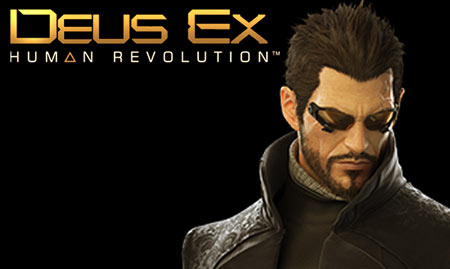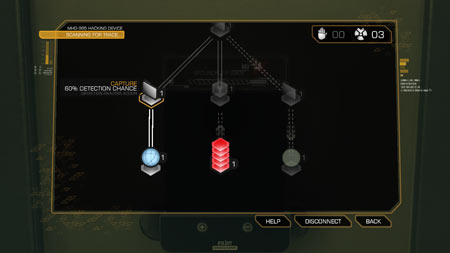Deus Ex: Human Revolution Performance Analysis
The highly anticipated prequel to the game that started it all, Deus Ex: Human Revolution is now available. We take a close look at this intriguing title, the first to offer in-game morphological anti-aliasing and AMD HD3D support upon its release.
Deus Ex: Three Times Is A Charm
The original Deus Ex combined elements of first-person shooters and role-playing games, allowing the player to shape the game world (and consequently, his experience) based on the choices he made. Released on June 26, 2000, it's still considered one of the best PC games of all time.
The sequel, Deus Ex: Invisible War, was released at the end of 2003 on the PC and Xbox. It received positive reviews, but never quite achieved the original's popularity.

It took more than seven years for the third game in the trilogy to arrive, but Deus Ex: Human Revolution is now available in stores. In addition to book-ending one of the highest-profile PC game series in existence, Eidos Montreal’s new release is the first game to natively support AMD’s HD3D on release, without middleware. It’s also the first game that provides AMD’s Morphological Anti-Aliasing (MLAA) technique to graphics cards from both side of the aisle, GeForce and Radeon alike. This makes it a particularly intriguing DirectX 11 title for us to analyze, so let’s dig in.
Deus Ex: Human Revolution Gameplay
When I attempt to describe Deus Ex: Human Revolution, a flood of pop culture references come to mind. The player’s character is named Adam Jensen. He’s two parts Neo, from the Matrix, and one part Clint Eastwood (especially the voice). The dystopian Detroit cityscape is very reminiscent of Blade Runner, as are some of the moral dilemmas and themes regarding dehumanization. The gritty beginning of the story stirs memories of Robocop. Not in a cheesy way, mind you, but with a very personal, gut-wrenching intro that makes you care about the characters and what they’re going through. It inspires me to want the Adam Jensen to succeed and bring the bad guys to justice; you might even say I want to see him get revenge. It’s been a long time since I’ve felt emotionally connected to a character in a video game, and getting a jaded veteran player like me to empathize is a significant accomplishment.

As far as game play goes, the fundamentals are there: decent combat, RPG-style upgrades, and options like stealth or computer-hacking to make your job more interesting. The rich customization system offers a wide variety of augmentations you can purchase to sync your character’s strengths with your play style. The combat model is serviceable, but the enemy AI is admittedly weak compared to the rest of the game. There’s a cover system that appears to be influenced by Gears of War, but it’s not as slick, and I find it a little awkward to use. Success can be a challenge, as enemy projectiles do significant damage. You will self heal if you can avoid fighting for long enough, though. On the whole, enemy engagements are something to which you'll look forward. I just don’t think they're as good as they could be.

Truth be told, combat is not the crux of this game. Deus Ex: Human Revolution is really about dialogue, characters, choices, and the story. To draw another comparison, it has a similar overall feel to Mass Effect 2, but does a better job of keeping my interest piqued. I find it a lot easier to identify with Deus Ex’s hero than I do with Mass Effect’s Commander Shepard. It’s funny, but Adam’s personal motivations seem more important than Shepard’s destiny to save the galaxy. Jensen is more relatable.
Get Tom's Hardware's best news and in-depth reviews, straight to your inbox.

Where the developers really nailed it is with regard to NPC interaction and the dialogue choices. As I said, I’m a jaded veteran video game player, and I can see a plot branch a mile away. In most games, it’s simply a matter of choice: do you want to follow path A or B? But in Deus Ex: Human Revolution, you are not only faced with a choice, you often have to convince an NPC to make your choice a reality. For example, at once point in the game, there’s a hostage situation and you can choose to let the kidnapper go or to fight him. Even when I let him go he tried to take a hostage, so I had to talk the guy down and convince him to release his prisoner through multiple, touchy responses. Whether or not the result was inevitable, I really felt that my dialogue choices made a huge difference in the outcome of that situation, and that those choices were based on analyzing the NPC properly. For me, this is one of those rare gaming moments that transcend the medium. Kudos to the game’s writing staff!

At this point, you should be able to tell that I consider Deus Ex: Human Revolution worth playing. Despite a slight weakness on the combat side of things, the rest of the game is very slick. The story and dialogue especially stand out above the rest of the genre, making Deus Ex: Human Revolution more enjoyable than most games in recent memory.
Now that we’ve covered the game play, let’s look at the more technical aspects of this title: graphics and performance.
Current page: Deus Ex: Three Times Is A Charm
Next Page Image Quality And Anti-Aliasing-
Soma42 Man as much as I prefer PC gaming I can't wait for the PS4 and Xbox 720 to come out so games will look noticeably better. Might actually want to upgrade my computer by then...Reply
Anywho, I didn't play the first two am I missing anything if I wanted to pick this up? -
festerovic @soma - I personally thought they were average - good, for the time. Not sure if they would stand up to time...Reply
Interesting to read the dual core HT chips outperformed real cores. Can we look forward to the 2600's HT being utilized in games before the next generation of CPUs comes out? -
gerchokas Good article - i still remember when i first saw the 2000' Deus Ex graphics on my friend's then-brand-new pc, i thought 'maaan... this looks *friggin* REAL!' I instantly knew my old Pentium cpu needed replacing ASAP...Reply
11 years later, i praise again the great graphics.. but this time they havent cought me off-guard! -
aznshinobi Hmm... The Nvidia cards perform better than the AMD cards of equivalent rank. I'm not playing fanboy but didn't AMD fund the studio? Afterall Eyefinity was made use of.Reply -
th3loonatic Are there any typos? Coz I see a GTX560 Ti listed as a card used to test, but it doesn't appear in the results.Reply -
fyasko festerovic@soma - I personally thought they were average - good, for the time. Not sure if they would stand up to time...Interesting to read the dual core HT chips outperformed real cores. Can we look forward to the 2600's HT being utilized in games before the next generation of CPUs comes out?Reply
HT isn't the reason dual core SB CPU's beat 6 core thubans. SB is a better architecture. Hurry up Bulldozer! -
mayankleoboy1 @ Don WoligroskiReply
i want the CPU benchmarks at 1080p with highest settings.
benches at 1024x768 are irrelevant. the gamer of today is atleast 1680, preferable 1080.
so please add to the benches. also, this would show the real impact of CPU on FPS.